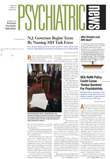Despite empirical evidence bolstering the belief that newer second-generation antipsychotic medications can increase patients' risk of experiencing a potentially fatal cardiac arrhythmia, new clinical research has found that these drugs are not associated with an increased rate of hospitalization for ventricular arrhythmias or cardiac arrest.
The report in the April Archives of Internal Medicine describes a case-control study of nursing-home residents in six U.S. states, using data from the Centers for Medicare and Medicaid Services' Minimum Data Set.
Rosa Liperoti, M.D., M.P.H., a professor of gerontological sciences at Catholic University of the Sacred Heart in Rome, teamed with colleagues at Brown University School of Medicine to study Medicare claims data to estimate the effect of first- and second-generation antipsychotic use on the risk of hospitalization for cardiac rhythm disturbances. The work was funded by the U.S. National Institute on Aging.
Liperoti and her colleagues examined claims data for the 18-month period from July 4, 1998, to December 30, 1999, looking for nursing-home residents who were admitted to a hospital for ventricular arrhythmias or cardiac arrest during that time period. They identified 649 cases.
For the control group, which consisted of 2,962 subjects, the researchers identified up to five patients living in the same nursing home in the same period who were admitted to inpatient hospitalization and who were discharged with a diagnosis of septicemia, gastrointestinal bleeding, or influenza with no record of cardiac arrhythmia or arrest.
The researchers then identified for all subjects the most proximal assessment of medication usage immediately prior to hospitalization, and from those records identified all participants who were “exposed” to an antipsychotic medication.
Patients exposed to antipsychotics were further divided into those exposed to second-generation agents, those exposed to first-generation agents, and those exposed to both. The two most commonly prescribed first-generation medications were haloperidol and thioridazine, and the two most common second-generation medications were risperidone and olanzapine.
Liperoti and her team found that those admitted for a cardiac arrhythmia or arrest were more likely to be younger and to be male than were controls.
Patients in the cardiac-case group were more likely to have significant functional impairment and cognitive deficits, but less likely to have cardiac diseases than were controls. Overall, there was no difference in the prevalence of antipsychotic use between cardiac cases and controls; however, subjects with the cardiac disorders were more likely to use conventional agents.
After controlling for potential confounding variables, such as age, sex, race/ethnicity, body mass index, concurrent drug use, and comorbid conditions, patients who were taking a conventional antipsychotic were 1.86 times more likely than those taking no antipsychotic to be hospitalized for cardiac arrhythmias or arrest. Patients taking second-generation antipsychotics, however, showed a slight trend toward decreased risk of hospitalization for cardiac arrhythmias or arrest compared with those with no antipsychotic use (odds ratio 0.87); however, the difference was not statistically significant.
When the researchers looked at patients' cardiac status, they found that among residents receiving conventional antipsychotics, those with cardiac disease were 3.27 times more likely to be admitted for an arrhythmia or arrest than were controls with no cardiac disease.
Liperoti and her colleagues noted that “the daily doses in our study were generally low (e.g., thioridazine daily dose mode was 50 mg) and were within the recommended range for this population. Thus our findings may indicate a particular sensitivity of the elderly population to the cardiotoxic effect of conventional antipsychotics.”
The team concluded that “physicians should use these drugs cautiously among elderly patients” and that “therapeutic choice should be based on a careful evaluation of the patient's individual needs and risk profile, along with the beneficial and harmful effects of both classes of antipsychotics.”
Arch Intern Med 2005 165 696
